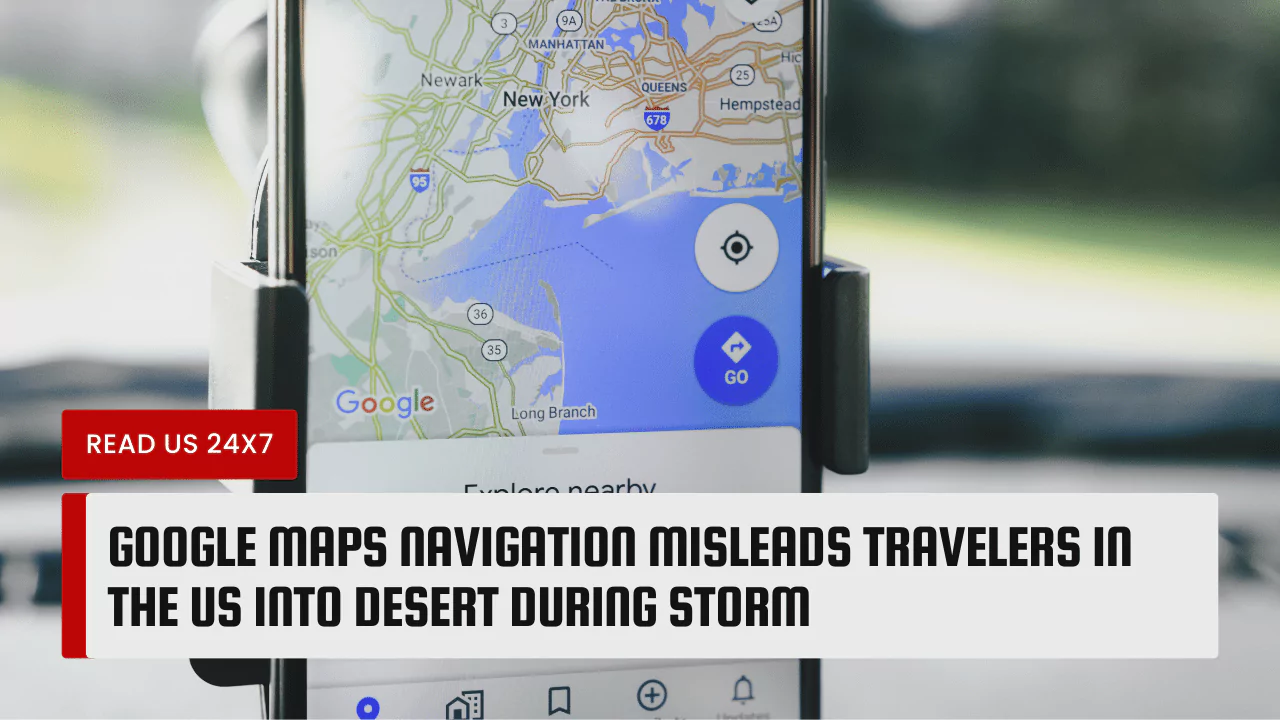A group of travelers returning from Las Vegas got stranded in the middle of the Mojave desert after following a shortcut suggested by Google Maps. The incident highlights the limitations of GPS technology and the importance of local knowledge.
The Google Maps Mistake
On November 19, 2023, Shelby Easler and her family were driving back to Los Angeles from the Formula 1 race in Las Vegas, using Google Maps as their navigation system. The app advised them to take an alternative route to avoid traffic caused by a dust storm on Interstate 15, promising to save them 50 minutes. However, they soon realized that the route was not a paved road, but a dirt path that led them into the rugged and wild terrain of Nevada’s desert landscape.
They were not the only ones who followed the misleading directions. A video recorded by Easler showed a line of cars behind them, all trying to navigate the rough road with no signs of civilization in sight. The situation became even more dangerous when they learned that the road was washed out by a recent storm and that there was no way to continue or turn back. They had no access to food, water, or shelter, and their cell phone signals were weak. They also had no reliable alternatives for navigation, as Google Maps was the only app that worked in the area.
Impact of the Mistake
The Google Maps mistake had serious consequences for the individuals and families involved, as well as for the emergency responders and the public perception of the app. The travelers faced the risk of dehydration, hypothermia, injury, or even death, as they were exposed to the harsh elements of the desert with no resources or protection. They also suffered from stress, anxiety, and frustration, as they did not know how long they would be stuck or how to get out of the situation.
The mistake also wasted the time and resources of the emergency responders, who had to deal with the dust storm on Interstate 15 and the stranded travelers in the desert. The California Highway Patrol was unable to assist the travelers, as they were busy with the storm emergency. The travelers had to call a tow truck to rescue them, but it took hours for the truck to arrive and it could only take one car at a time. Some of the cars were damaged by the rough terrain and had to be left behind in the desert.
The mistake also damaged the reputation and credibility of Google Maps, which is one of the most popular and widely used navigation apps in the world. The incident exposed the flaws and inaccuracies of the app, which could potentially misguide millions of users and put them in danger. The incident also raised questions about the reliability and accountability of the app, which did not warn the users about the road conditions or provide any updates or corrections.
Steps to Avoid Similar Mistakes
To prevent such mistakes from happening again, Google Maps and other navigation apps need to take several steps to improve their information and services. First, they need to thoroughly check and update the information on their maps, especially in remote and unfamiliar areas, to ensure that they are accurate and up-to-date. They also need to verify the sources and quality of their data and use multiple sources to cross-check and validate their information.
Second, they need to implement safeguards and warning systems to alert the users about the potential risks and challenges of the routes they suggest. They need to provide clear and detailed information about the road conditions, such as the type, length, and difficulty of the road, and the availability of services and facilities along the way. They also need to give the users the option to choose or reject the routes and to provide alternative routes in case of emergencies or changes.
Third, they need to encourage the users to report any inaccuracies or problems they encounter while using the app. They need to create a feedback mechanism that allows the users to easily and quickly communicate with the app developers and provide suggestions or complaints. They also need to respond to the feedback and take action to fix the issues and improve the app.
By taking these steps, Google Maps and other navigation apps can enhance their performance and reliability, and avoid putting their users in harm’s way. They can also restore their trust and confidence among the public, and provide a better and safer service for the travelers.



